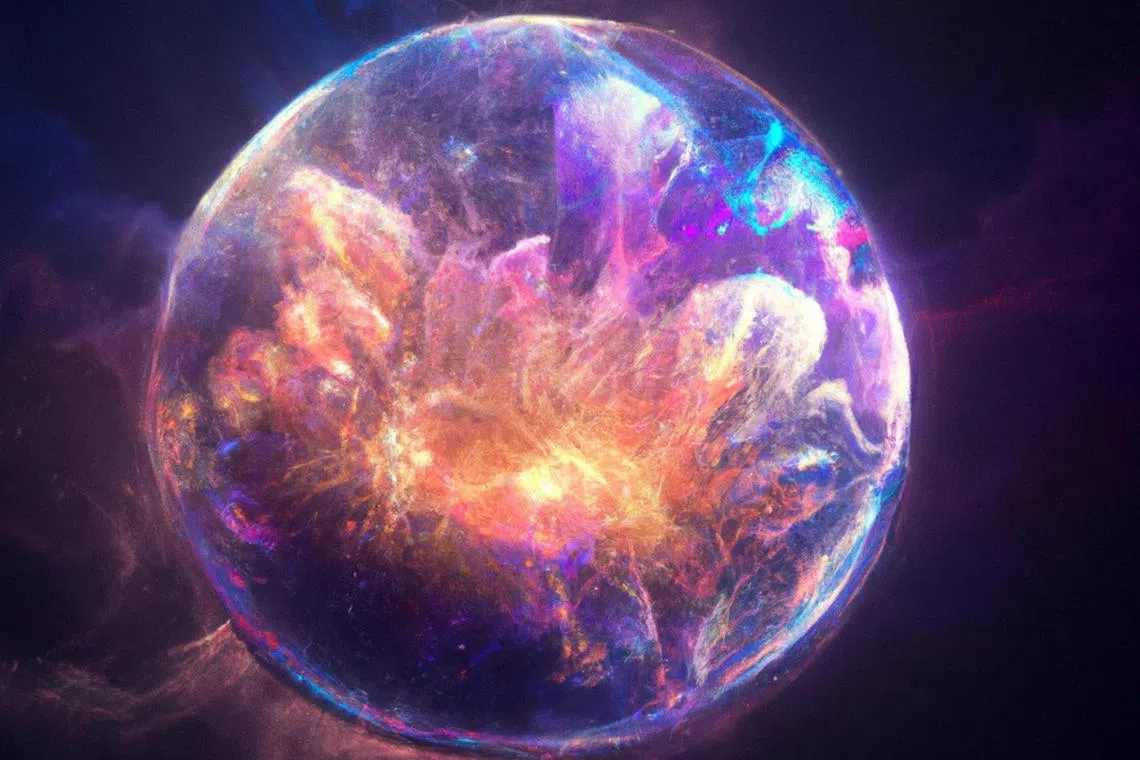Astronomers marvel at ‘perfect explosion’: A spherical cosmic fireball
Sign up now: Get ST's newsletters delivered to your inbox

The two neutron stars had orbited each other for billions of years before colliding at high speeds and exploding.
PHOTO: REUTERS
Follow topic:
WASHINGTON - Astronomers have observed what might be the “perfect explosion”, a colossal and utterly spherical blast triggered by the merger of two very dense stellar remnants called neutron stars shortly before the combined entity collapsed to form a black hole.
Researchers on Wednesday described for the first time the contours of the type of explosion, called a kilonova, that occurs when neutron stars merge.
The rapidly expanding fireball of luminous matter they detailed defied their expectations.
The two neutron stars, with a combined mass about 2.7 times that of our sun, had orbited each other for billions of years before colliding at high speeds and exploding.
This unfolded in a galaxy called NGC 4993, about 140-150 million light years away from Earth in the direction of the constellation Hydra. A light year is the distance light travels in a year – 9.5 trillion km.
The existence of kilonova explosions was proposed in 1974 and confirmed in 2013, but what they looked like was unknown until this one was detected in 2017 and studied intensively.
“It is a perfect explosion in several ways. It is beautiful, both aesthetically, in the simplicity of the shape, and in its physical significance,” said astrophysicist Albert Sneppen of the Cosmic Dawn Centre in Copenhagen, lead author of the research published in the journal Nature.
“Aesthetically, the colours the kilonova emits quite literally look like a sun – except, of course, being a few hundred million times larger in surface area. Physically, this spherical explosion contains the extraordinary physics at the heart of this merger,” Mr Sneppen added.
The researchers had expected the explosion to perhaps look like a flattened disk – a colossal luminous cosmic pancake, possibly with a jet of material streaming out of it.
“To be honest, we are really going back to the drawing board with this,” said Cosmic Dawn Centre astrophysicist and study co-author Darach Watson.
“Given the extreme nature of the physical conditions – far more extreme than a nuclear explosion, for example, with densities greater than an atomic nucleus, temperatures of billions of degrees and magnetic fields strong enough to distort the shapes of atoms – there may well be fundamental physics here that we don’t understand yet,” Associate Professor Watson added.
The kilonova was studied using the European Southern Observatory’s Chile-based Very Large Telescope.
The two neutron stars began their lives as massive normal stars in a two-star system called a binary.
Each exploded and collapsed after running out of fuel, leaving behind a small and dense core about 19km in diameter but packing more mass than the sun.
Very gradually, they drew nearer to each other, orbiting at a speedy clip.
Each was stretched out and pulled apart in the final seconds before the merger because of the power of the other’s gravitational field.
Their inner parts collided at about 25 per cent of the speed of light, creating the most intense magnetic fields in the universe. The explosion unleashed the luminosity of about a billion suns for a few days.
The two briefly formed a single massive neutron star that then collapsed to form a black hole, an even denser object with gravity so fierce that not even light can escape.
The outer parts of the neutron stars, meanwhile, were stretched into long streamers, with some material flung into space.
During the process, the densities and temperatures were so intense that heavy elements were forged, including gold, platinum, arsenic, uranium and iodine.
The researchers offered some hypotheses to explain the spherical shape of the explosion, including energy released from the short-lived single neutron star’s enormous magnetic field or the role of enigmatic particles called neutrinos.
“This is fundamentally astonishing, and an exciting challenge for any theoreticians and numerical simulations,” Mr Sneppen said.
“The game is on.” REUTERS

